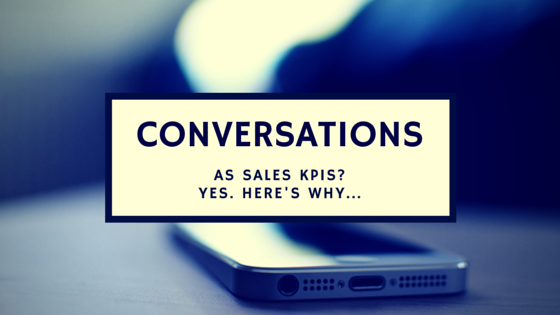
Many organizations are focusing on building metrics-driven sales environments today. And with so many types of key performance indicators (KPIs) out there for sales teams, everyone has their own playbook. Me, I’m a conversational kind of sales KPI guy. Let’s dive right in then, shall we?
I believe there are two types of sales KPIs: There are controllable KPIs, and there are non-controllable KPIs.
[Check out our eBook: “Why Modern Sales Leaders Drive with KPIs.”]
Controllable vs. Non-Controllable Sales KPIs
If I say “We’re going to have 25 conversations per week,” and you’re at 22, and it’s Friday at 3 o’clock, you can pick up the phone and start dialing. It’s controllable.
So, a controllable sales KPI is mutually agreed upon — or it should be — and is the most measurable activity between the rep and me, their VP of Sales. These show me effort, determination and grit. If a team member misses one it’s their fault, because they can control it. Thus, a controllable sales KPI allows you to predict the outcome to some degree.
On the other hand, sales — like net new revenue booked — can’t always be controlled for 100% of the sales process. If a sales rep does everything by the books and then the prospect’s company is acquired and you lose the deal, that’s uncontrollable.
In any new sale, we have to work within the customer’s process and constraints. We work with large financial institutions that take 8 months to get through procurement, legal testing and security. We can’t control that process at all. What we can control is how many people we talk to on a daily or weekly basis. That’s where conversations come in.
Defining “Conversation”
The best sales advice I’ve gotten is that the best people talk to the most people. I believe that to be true. It’s the definition of good busy. Conversation is king, because that is how we track how many people we talk to.
My definition of conversation is intentionally broad, and that’s by design. But, a conversation is defined as speaking with a prospect and learning something about the organization that will move the deal forward. That ranges from mapping out tactical next steps in the sales process as far as learning that the CEO likes golden retrievers.
How to Measure Conversations as a Sales KPI
There are all sorts of ways to measure conversations. Many teams track metrics around talk time. I choose to set a sales KPI around the amount of conversations our team has each week. Here are the parameters:
- 20 conversations a week minimum. We have some sales reps that will knock out 40 or 50. I believe that 4 conversations per day is the absolute minimum amount we need to be at.
- “Conversation” is defined as a phone call with a qualified lead or customer in which we learn something. Yes, emails can be meaningful too, but you have to draw the line somewhere. Plus, emails are not a substitute for people actually talking.
I believe that the biggest parameter of success is the amount of time spent with prospects and customers, and setting conversations as a sales KPI is our easiest way to track this.
So, there you have it: Conversations and the nitty gritty that go with them. If you’re not already, name conversations as one of your team’s sales KPIs, and let us know how it goes.
Also, get ready for the next post in this series. We’ll look deeper at how sales KPIs come into play in conversations. Specifically, we’ll discuss what you need to know to capitalize on every conversation you have with your customers.



